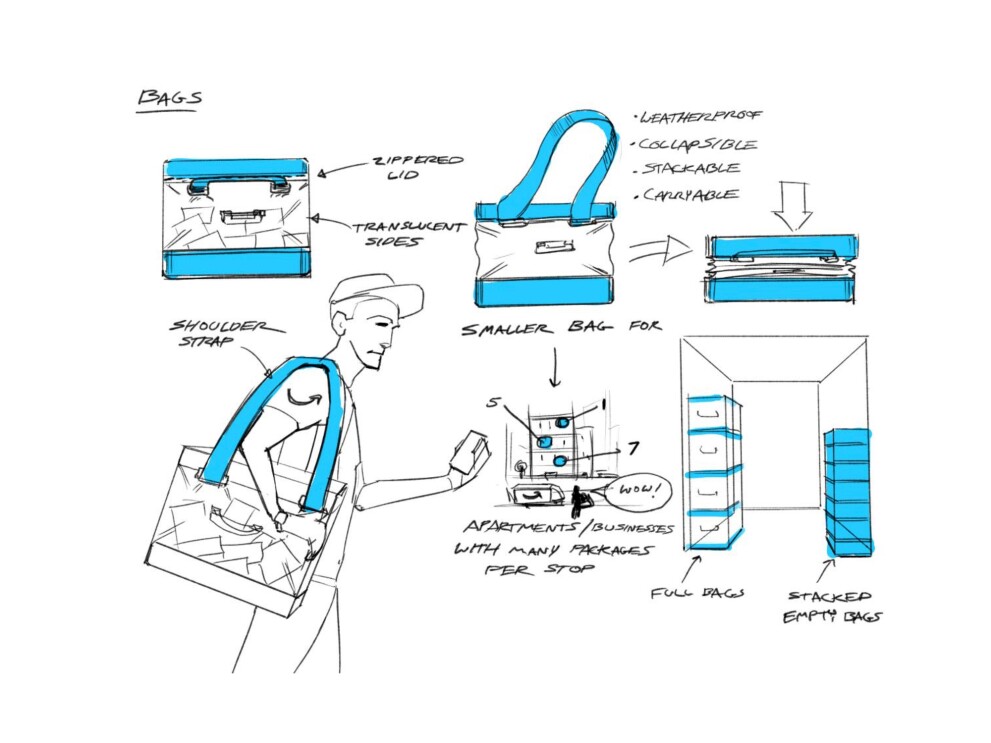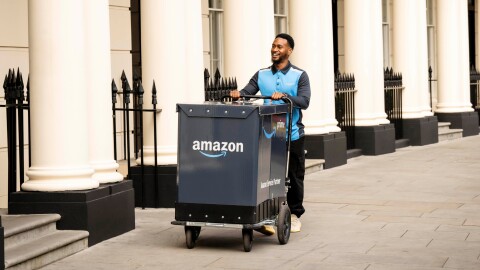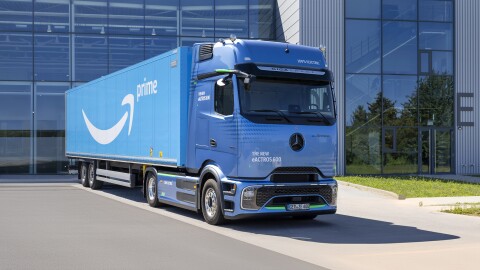The future of Amazon’s delivery to customers’ homes is on display inside a manufacturing facility in Plymouth, Michigan. Delivery driver Natasha Riggins is about to get a sneak peek of the state-of-the-art safety and design features on Amazon’s new, all-electric vehicles that are designed to save millions of metric tons of carbon per year.
As part of The Climate Pledge, Amazon announced the order of 100,000 electric delivery vehicles from Rivian, an electric vehicle maker and automotive technology company that develops vehicles, products and services related to sustainable transportation. Amazon is leveraging the company’s battery and vehicle design expertise to produce custom delivery vehicles that raise the bar for driver safety and provide a best-in-class driver experience, all while reducing carbon emissions.
This content is hosted by a third party (www.youtube.com).
To view the content, you need to consent to cookies by selecting Accept all in the popup banner. Or you can go to the site footer, select Cookie Preferences, and then select On under Functional Cookies, Performance Cookies and Advertising Cookies.
“We wanted to really work backwards from how the driver uses the vehicle,” said Ross Rachey, Director of Amazon’s global fleet. “From the moment they step into the vehicle, to when they’re driving, when they park and look for a package, and how they exit the vehicle. Everything’s been customised for how they use that vehicle.”
Rivian’s design studio showcases scale models of the vehicle’s exterior and interior. Sculptors smooth the edges of a full-sized clay model, a physical representation of how the vans look from the outside. Another scale model called a “package buck” informs how the vehicle feels from the inside – from the arm rests to shelving to the large windshield designed to improve visibility.
In another room, Riggins is in the driver’s seat of the future. Donning a virtual reality headset, Riggins likes what she sees. “I can picture myself with my bag right here. This is sweet, I like this a lot.” Riggins is one of dozens of drivers whose feedback influenced the design of Amazon’s new vehicles, which will start delivering packages to customers in 2021.
Engineers went on ride-alongs to understand what works and doesn’t work with Amazon’s current fleet of gas-powered vehicles. “It’s important that it’s not just electric, but that we actually make the vehicle better in every way,” said R.J. Scaringe, Rivian’s CEO. “The vehicle is being designed for the driver. And through the process we’ve had them in to provide feedback and each time we learned something new and we made adjustments. And when they come back, they see those adjustments. That iterative loop has been really critical.”
In addition to having zero emissions, the vehicles are designed to include a suite of advanced safety technology and industry-leading features, including automated emergency braking, front wheel and all-wheel drive options, lane keep assist, a pedestrian warning system, traffic sign recognition, an automatic warning system that detects distracted driver behavior, and adaptive seatbelts and airbags that adjust to the size and weight of the driver.
When a driver steps into this vehicle, they’ll take comfort knowing this is the safest delivery vehicle that they could be in. Not only is it sustainable, but you’re getting a host of performance benefits.

The vehicles will come with all the information drivers need to be safer on the roads. Through the VR headset, Riggins could see the digital instrument cluster and central display screen that’s integrated with Amazon’s logistics management and routing. The built-in mapping technology along with package delivery information eliminates the need for extra handheld devices. Drivers will also be able to ask Alexa for help or use voice commands in the cargo bay when sorting packages.
The design includes durable, resistant materials and an overall vehicle that is lighter and nimbler than traditional delivery vans, making the vehicles quieter and easier to navigate, especially in a tight, urban environment. Additionally, the vehicle cabin is optimised for quick package access, with a traditional hinged door on the driver side for optimum driver safety, and a sliding passenger door and foldable passenger seat for quick entry and exit. A rear roll-up door will support more efficient package loading.
The entire vehicle, from cab to cargo bay, is designed with the ergonomic and functional needs of drivers in mind. Temperature-controlled seats, heated steering wheels and armrests, are powered by an intelligent occupant cabin thermal control system designed to reduce energy consumption.
“We spend a lot of time in these vehicles and you want to be in something that’s comfortable, safe and reliable,” Riggins said. Removing the VR headset and stepping out of the virtual driver’s seat, she’s excited for the real thing. “I can’t wait to get my hands on it.”
Amazon plans to have 10,000 of the new electric vehicles on the road as early as 2022 and all 100,000 vehicles on the road by 2030. Amazon customers will see Rivian vehicles on European roads, too.
Find out more about Amazon's Climate Pledge















